
Smartphone with superlatives has its eye on the prize - Realme GT 7 Pro review
Galaxy S25 Ultra killer.
Extremely bright display, huge battery and an incredibly powerful Snapdragon 8 Elite in the upper class, plus the Android phone uses an ultrasonic fingerprint sensor and super-fast charging. Is Realme building the best phone for under 1000 Euros (~$1038) with its IP69-certified GT7 Pro?Update: We have received feedback from Realme Germany on the "Software" and "Accessories" sections
Marcus Herbrich, 👁 Daniel Schmidt, ✓ Brian Burriston (translated by DeepL / Ninh Duy) Published 🇩🇪 🇫🇷 ...
Verdict
The Realme GT7 Pro impresses in everyday use at first glance with a flagship-like feel. The workmanship and choice of materials are first-class and the fast OLED screen is really bright and very well calibrated. The fact that no LTPO technology is used is no problem for the large energy storage of the top-of-the-range phone.
At second glance, however, the GT7 Pro does lose points in certain areas, such as the camera or the features (no UWB chip, no Qi standard, USB 2.0 only, ...). On closer inspection, the Realme phone also differs from a current high-end phone in a number of smaller ways, such as the shortened update guarantee, wider display edges, a mid-range protective glass or connectivity deficits. Despite these minor shortcomings, the Realme GT7 Pro remains an attractive choice for users who value a good price-performance ratio and high performance.
Pros
Cons
Price and availability
The Realme GT7 Pro is currently only available in German-speaking countries in a version with 12 GB RAM and 256 GB flash memory at an RRP of 999 Euros (~$1037), including at Amazon.de. As an import, the flagship killer starts at Trading Shenzhen in the CN version for around 560 Euros (~$581), and a version with 16 GB is also available.
Possible competitors in comparison
Image | Model / Review | Price | Weight | Drive | Display |
|---|---|---|---|---|---|
| Realme GT7 Pro Qualcomm Snapdragon 8 Elite ⎘ Qualcomm Adreno 830 ⎘ 16 GB Memory, 512 GB | Amazon: 1. AKABEILA [3 Pack Privacy Scr... 2. $7.99 Lucyliy (3 Pack) Compatible ... 3. $9.99 Shantime [2 Pack Tempered Gl... List Price: 999€ | 223 g | 512 GB UFS 4.0 Flash | 6.78" 2780x1264 450 PPI AMOLED | |
| OnePlus 13 Qualcomm Snapdragon 8 Elite ⎘ Qualcomm Adreno 830 ⎘ 16 GB Memory, 512 GB | Amazon: 1. $13.98 HOMEMO [2+2 Pack] for OnePlu... 2. $11.98 [2+2 Pack] for OnePlus 13 Sc... 3. $12.98 JZG 3 Pack Screen Protector ... List Price: 720€ | 213 g | 512 GB UFS 4.0 Flash | 6.82" 3168x1440 510 PPI AMOLED | |
| Xiaomi 15 Pro Qualcomm Snapdragon 8 Elite ⎘ Qualcomm Adreno 830 ⎘ 16 GB Memory, 1024 GB | Amazon: 1. $4.99 Kicvbnco 3 Pack For Xiaomi 1... 2. AKABEILA [3 Pack Privacy Scr... 3. $6.99 TMahhbid 2pcs Hydrogel Film ... List Price: 810€ | 213 g | 1 TB UFS 4.0 Flash | 6.73" 3200x1440 521 PPI AMOLED | |
| Vivo X200 Pro Mediatek Dimensity 9400 ⎘ ARM Immortalis-G925 MC12 ⎘ 15 GB Memory, 512 GB | Amazon: 1. $10.99 TNKISRY Cover for Vivo X200 ... 2. $11.49 TNKISRY Tempered Glass for V... 3. $24.19 atFoliX Screen Protector com... List Price: 850€ | 223 g | 512 GB UFS 4.0 Flash | 6.78" 2800x1260 453 PPI OLED | |
| Samsung Galaxy S24+ Samsung Exynos 2400 ⎘ Samsung Xclipse 940 ⎘ 12 GB Memory, 512 GB | Amazon: $759.78 List Price: 1149€ | 196 g | 512 GB UFS 4.0 Flash | 6.70" 3120x1440 513 PPI AMOLED |
Table of Contents
- Verdict
- Specifications of the Realme GT 7 Pro
- Case - Realme GT 7 Pro with IP rating
- Features - top-of-the-range phone with USB 2.0
- Software - Realme GT 7 Pro with Android 15
- Communication and GNSS - Realme GT 7 Pro with 5G
- Phone functions and voice quality - smartphone with dual SIM
- Cameras - Realme GT 7 Pro with OIS
- Accessories and warranty - Realme phone with [no] power supply unit
- Input devices & operation - Realme GT 7 Pro with Face Unlock
- Display - premium class phone with OLED
- Performance - Realme GT 7 Pro with Qualcomm SoC
- Emissions - Smartphone with 3D cooling
- Battery life - Realme GT 7 Pro with large battery
- Notebookcheck overall rating
Thanks to the Snapdragon 8 Elite and a fast memory connection, Realme markets the GT7 Pro as a performance flagship. However, the upper-class phone is not limited to brute performance, but also has a number of other high-end features apart from the Qualcomm SoCs technical components.
Thanks to the modern SiC battery technology, the capacity of 6,500 mAh is extremely generous and the charging speed is very high at up to 120 watts. The 6.78-inch GT7 Pro also achieves a peak brightness of 6,500 nits, according to the data sheet, and the camera system is also only partially economical. In addition to a periscope lens, an optically stabilized Sony sensor with 8K support is also available.
Specifications of the Realme GT 7 Pro
Case - Realme GT 7 Pro with IP rating
The Realme GT7 Pro is very well made, with an eye-catching "Mars" design on the back and a rounded OLED display on the front. The protective glass used (Gorilla Glass 7i) and the somewhat wide edges around the 6.78-inch screen make it clear that the GT7 Pro is not always at a high-end level. The display surface ratio is "only" 89%, which is visibly lower than that of our comparison devices.
Thanks to IP69 certification, the upper-class phone is waterproof, even down to a water depth of two meters (~6.5 feet). With the "Underwater Mode", the GT7 Pro can take photos and videos underwater, although the manufacturer states that the upper-class phone is not suitable for professional diving. To use the touchscreen in underwater mode, there is an extra "Underwater" menu in the settings.
Features - top-of-the-range phone with USB 2.0
With an IR blaster, Bluetooth 5.4, USB OTG, NFC and Miracast, the GT7 Pro offers a comprehensive range of features; an ultra-wideband chip is missing unlike it is with many competitors, as well as a fast USB standard with a wired image output. In our copy test, the USB 2.0 port of the Realme cell phone with a Samsung 980 Pro (M2.SSD hard disk) achieved comparatively slow transfer rates of 41 MB/s. The connected storage media may be formatted with NTFS or exFAT.
Software - Realme GT 7 Pro with Android 15
The GT7 Pro is delivered with Android 15 and the in-house Realme UI in version 6.0. During the test period, the operating system is based on the security patches from December 2024 and will probably only be supplied with security-relevant updates until 2028. Operating system upgrades will only be available for three years, which in this Price range is not really good.
February 8, 2025 update: Realme guarantees four years of security patches and four years of Android upgrades.
Sustainability
Sustainability is not the marketing focus of the GT7 Pro, so it is not possible to obtain information on material extraction or recyclability. However, the smartphone's packaging appears to be free of plastic. The device itself is wrapped in foil, while the rest of the packaging is made of cardboard.
Communication and GNSS - Realme GT 7 Pro with 5G
The high-end phone supports access to the fast mobile 5G network and there should also be no connectivity problems with 4G for use in German-speaking countries. However, the GT7 Pro's LTE coverage of 19 bands is more limited than that of a High-end smartphone.
Within the home Wi-Fi network, the Realme phone offers modern Wi-Fi 7, but "only" achieves peak transfer rates of around 1,000 Mbit/s in combination with our reference router Asus ROG Rapture GT-AXE11000. The reason for this is the lack of 6 GHz support.
| Networking | |
| iperf3 transmit AXE11000 | |
| Average Wi-Fi 7 (556 - 1828, n=62) | |
| Realme GT7 Pro | |
| Vivo X200 Pro | |
| Samsung Galaxy S24+ | |
| OnePlus 13 | |
| Average of class Smartphone (49.8 - 1828, n=183, last 2 years) | |
| iperf3 receive AXE11000 | |
| Average Wi-Fi 7 (565 - 1875, n=62) | |
| Vivo X200 Pro | |
| Realme GT7 Pro | |
| OnePlus 13 | |
| Average of class Smartphone (52 - 1857, n=183, last 2 years) | |
| Samsung Galaxy S24+ | |
| iperf3 transmit AXE11000 6GHz | |
| OnePlus 13 | |
| Samsung Galaxy S24+ | |
| Average Wi-Fi 7 (563 - 1945, n=48) | |
| Average of class Smartphone (508 - 1945, n=91, last 2 years) | |
| Xiaomi 15 Pro | |
| iperf3 receive AXE11000 6GHz | |
| Average Wi-Fi 7 (451 - 1864, n=48) | |
| Xiaomi 15 Pro | |
| OnePlus 13 | |
| Average of class Smartphone (451 - 1870, n=91, last 2 years) | |
| Samsung Galaxy S24+ | |
Compared to our reference device (Garmin Venu 2), the positioning of the Realme phone is convincing with exact results, although there are minor inaccuracies in the route recording. Thanks to dual-band GNSS, we were only able to detect minor deviations from the actual route used with the GT7 Pro.
Phone functions and voice quality - smartphone with dual SIM
Cameras - Realme GT 7 Pro with OIS
The GT7 Pro has a 50 MPix main camera based on the Sony IMX906 in 1/1.56-inch format. In daylight, pictures can score with good sharpness and appealing dynamics. In terms of color balance, however, the upper-class phone fluctuates noticeably between a cool and warm image. Green and blue tones also tend to be over-saturated.
Due to the rather small sensor, low-light scenes are not the GT7 Pro's strong point. On the other hand, the upper-class smartphone offers a very decent 50 MPix telephoto lens, which delivers competitive photos up to a 5x magnification and a triple, lossless zoom including OIS. The ultra-wide-angle camera with a 35 mm-equivalent focal length of 16 mm and 8 MPix also impresses with solid quality in everyday use.
Image comparison
Choose a scene and navigate within the first image. One click changes the position on touchscreens. One click on the zoomed-in image opens the original in a new window. The first image shows the scaled photograph of the test device.
Wide AngleWide AngleLow Light Ultra Wide AngleZoom 5x

Accessories and warranty - Realme phone with [no] power supply unit
The scope of delivery of the GT7 Pro consists of a USB cable (USB-A to USB-C), a protective cover, a modular 120-watt power supply unit and a SIM pin as well as a quick start guide including warranty conditions. No protective film is installed ex works.
The warranty period is 24 months in Germany.
February 8, 2025 update: No 120-watt power supply unit in the box, for German customers at least.
Input devices & operation - Realme GT 7 Pro with Face Unlock
Inputs on the 6.78-inch screen are implemented accurately right into the corners of the touchscreen. With a sampling rate of up to 2,600 Hz, the OLED panel reacts extremely quickly and with high sensitivity to touch. A linear vibration motor (X-axis) provides pleasant haptic feedback in everyday use, but in our opinion it could have been a little crisper.
A second-generation Qualcomm ultrasonic fingerprint sensor is installed to detect the finger, which even recognizes wet hands reliably and very quickly. According to Realme, the GT7 Pro takes just 0.1 seconds to do this.
Display - premium class phone with OLED

The GT7 Pro uses an Eco2 OLED Plus display from Samsung, in which the organic display does not require a separate polarizer layer and should therefore consume less energy. However, LTPO technology is not used, which means that the system cannot dynamically adjust the refresh rate of 120 Hz. If you want to save power, you can fall back on 60 Hz.
The 1,264p screen is attractively sharp at 450 ppi, but falls (significantly) short of expectations in terms of maximum brightness. We cannot come close to confirming the advertised 6,500 nits for the GT7 Pro. Our measurement with an APL18 pattern results in 2,662 cd/m² and the display shines at 2,687 cd/m² when playing 4K video material - both very good values nonetheless. The Realme phone also supports a wide range of HDR standards (HDR10, HDR10+, Dolby Vision, HLG) and is also certified twice by TÜV Rheinland (flicker-free, low blue light content).
The GT7 Pro uses PWM with a fairly high frequency of 1851 Hz to control the luminance.
| |||||||||||||||||||||||||
Brightness Distribution: 99 %
Center on Battery: 2139 cd/m²
Contrast: ∞:1 (Black: 0 cd/m²)
ΔE ColorChecker Calman: 0.8 | ∀{0.5-29.43 Ø4.79}
ΔE Greyscale Calman: 1.1 | ∀{0.09-98 Ø5}
99.8% sRGB (Calman 2D)
Gamma: 2.27
CCT: 6582 K
| Realme GT7 Pro AMOLED, 2780x1264, 6.8" | OnePlus 13 AMOLED, 3168x1440, 6.8" | Xiaomi 15 Pro AMOLED, 3200x1440, 6.7" | Vivo X200 Pro OLED, 2800x1260, 6.8" | Samsung Galaxy S24+ AMOLED, 3120x1440, 6.7" | |
|---|---|---|---|---|---|
| Screen | -31% | -60% | -5% | -113% | |
| Brightness middle (cd/m²) | 2139 | 1155 -46% | 1016 -53% | 1828 -15% | 1358 -37% |
| Brightness (cd/m²) | 2131 | 1155 -46% | 1017 -52% | 1828 -14% | 1358 -36% |
| Brightness Distribution (%) | 99 | 98 -1% | 98 -1% | 94 -5% | 92 -7% |
| Black Level * (cd/m²) | |||||
| Colorchecker dE 2000 * | 0.8 | 1 -25% | 1.15 -44% | 0.7 12% | 3 -275% |
| Colorchecker dE 2000 max. * | 1.5 | 1.8 -20% | 3.57 -138% | 1.6 -7% | 4.4 -193% |
| Greyscale dE 2000 * | 1.1 | 1.6 -45% | 1.9 -73% | 1.1 -0% | 2.5 -127% |
| Gamma | 2.27 97% | 2.3 96% | 2.2 100% | 2.25 98% | 1.98 111% |
| CCT | 6582 99% | 6503 100% | 6677 97% | 6520 100% | 6656 98% |
* ... smaller is better
Screen Flickering / PWM (Pulse-Width Modulation)
| Screen flickering / PWM detected | 120 Hz Amplitude: 14.6 % Secondary Frequency: 1851 Hz | ||
The display backlight flickers at 120 Hz (worst case, e.g., utilizing PWM) . The frequency of 120 Hz is very low, so the flickering may cause eyestrain and headaches after extended use. In comparison: 53 % of all tested devices do not use PWM to dim the display. If PWM was detected, an average of 8156 (minimum: 5 - maximum: 343500) Hz was measured. | |||
Measurement series with fixed zoom level and different brightness settings (The amplitude curve at minimum brightness looks flat, but this is due to the scaling. The info box shows the enlarged version of the amplitude at minimum brightness)
Our analysis with the photo spectrometer and software from CalMan shows very low average Delta-E deviations in the sRGB color space for the top-of-the-range phone. In addition to four color profiles, the white balance can also be individually adjusted in the settings menus.
Display Response Times
| ↔ Response Time Black to White | ||
|---|---|---|
| 1.26 ms ... rise ↗ and fall ↘ combined | ↗ 0.677 ms rise | |
| ↘ 0.587 ms fall | ||
| The screen shows very fast response rates in our tests and should be very well suited for fast-paced gaming. In comparison, all tested devices range from 0.1 (minimum) to 240 (maximum) ms. » 6 % of all devices are better. This means that the measured response time is better than the average of all tested devices (20.3 ms). | ||
| ↔ Response Time 50% Grey to 80% Grey | ||
| 1.05 ms ... rise ↗ and fall ↘ combined | ↗ 0.613 ms rise | |
| ↘ 0.4405 ms fall | ||
| The screen shows very fast response rates in our tests and should be very well suited for fast-paced gaming. In comparison, all tested devices range from 0.165 (minimum) to 636 (maximum) ms. » 3 % of all devices are better. This means that the measured response time is better than the average of all tested devices (31.7 ms). | ||
Performance - Realme GT 7 Pro with Qualcomm SoC
The Realme smartphone is powered by the Snapdragon 8 Elite and uses an Adreno 830 for graphics calculations. Although the GT7 Pro has already been caught cheating in certain benchmarks, the results in GT mode are surprisingly worse than those of the Qualcomm competition. Especially in the CPU benchmark of Geekbench, the multi-core results are not exhilarating.
The off-screen values of the Realme GT7 Pro are also only partially convincing in the GPU tests. Here, a OnePlus 13 or Xiaomi 15 Pro perform significantly better. The same also applies to Geekbench AI.
| UL Procyon AI Inference for Android - Overall Score NNAPI | |
| Vivo X200 Pro | |
| OnePlus 13 | |
| Xiaomi 15 Pro | |
| Average of class Smartphone (3769 - 81594, n=138, last 2 years) | |
| Average Qualcomm Snapdragon 8 Elite (8865 - 22767, n=16) | |
| Samsung Galaxy S24+ | |
| Realme GT7 Pro | |
| Geekbench AI | |
| Half Precision TensorFlow NNAPI 1.2 | |
| Vivo X200 Pro | |
| Average of class Smartphone (51 - 9453, n=55, last 2 years) | |
| Xiaomi 15 Pro | |
| OnePlus 13 | |
| Average Qualcomm Snapdragon 8 Elite (218 - 734, n=15) | |
| Realme GT7 Pro | |
| Single Precision TensorFlow NNAPI 1.2 | |
| Vivo X200 Pro | |
| Xiaomi 15 Pro | |
| OnePlus 13 | |
| Average of class Smartphone (51 - 2472, n=55, last 2 years) | |
| Average Qualcomm Snapdragon 8 Elite (255 - 738, n=15) | |
| Realme GT7 Pro | |
| Quantized TensorFlow NNAPI 1.2 | |
| Vivo X200 Pro | |
| Average of class Smartphone (123 - 13084, n=55, last 2 years) | |
| Xiaomi 15 Pro | |
| OnePlus 13 | |
| Average Qualcomm Snapdragon 8 Elite (555 - 1708, n=15) | |
| Realme GT7 Pro | |
| AI Benchmark - Score V6 | |
| Realme GT7 Pro | |
| Xiaomi 15 Pro | |
| Vivo X200 Pro | |
| Average Qualcomm Snapdragon 8 Elite (302 - 12845, n=14) | |
| Average of class Smartphone (55.6 - 22149, n=70, last 2 years) | |
| OnePlus 13 | |
GFXBench (DX / GLBenchmark) 2.7: T-Rex Onscreen | 1920x1080 T-Rex Offscreen
GFXBench 3.0: on screen Manhattan Onscreen OGL | 1920x1080 1080p Manhattan Offscreen
GFXBench 3.1: on screen Manhattan ES 3.1 Onscreen | 1920x1080 Manhattan ES 3.1 Offscreen
GFXBench: on screen Car Chase Onscreen | 1920x1080 Car Chase Offscreen | on screen Aztec Ruins High Tier Onscreen | 2560x1440 Aztec Ruins High Tier Offscreen | on screen Aztec Ruins Normal Tier Onscreen | 1920x1080 Aztec Ruins Normal Tier Offscreen | 3840x2160 4K Aztec Ruins High Tier Offscreen
| 3DMark / Wild Life Extreme Unlimited | |
| OnePlus 13 | |
| Xiaomi 15 Pro | |
| Vivo X200 Pro | |
| Realme GT7 Pro | |
| Samsung Galaxy S24+ | |
| 3DMark / Wild Life Extreme | |
| OnePlus 13 | |
| Xiaomi 15 Pro | |
| Vivo X200 Pro | |
| Realme GT7 Pro | |
| Samsung Galaxy S24+ | |
| 3DMark / Wild Life Unlimited Score | |
| OnePlus 13 | |
| Xiaomi 15 Pro | |
| Realme GT7 Pro | |
| Vivo X200 Pro | |
| Samsung Galaxy S24+ | |
| 3DMark / Solar Bay Score | |
| OnePlus 13 | |
| Xiaomi 15 Pro | |
| Vivo X200 Pro | |
| Realme GT7 Pro | |
| Samsung Galaxy S24+ | |
| 3DMark / Solar Bay Unlimited Score | |
| OnePlus 13 | |
| Xiaomi 15 Pro | |
| Vivo X200 Pro | |
| Realme GT7 Pro | |
| Samsung Galaxy S24+ | |
| 3DMark / Steel Nomad Light Unlimited Score | |
| Xiaomi 15 Pro | |
| OnePlus 13 | |
| Vivo X200 Pro | |
| Realme GT7 Pro | |
| 3DMark / Steel Nomad Light Score | |
| OnePlus 13 | |
| Xiaomi 15 Pro | |
| Vivo X200 Pro | |
| Realme GT7 Pro | |
| 3DMark / Sling Shot Extreme (ES 3.1) Unlimited Physics | |
| Vivo X200 Pro | |
| OnePlus 13 | |
| Xiaomi 15 Pro | |
| Realme GT7 Pro | |
| Samsung Galaxy S24+ | |
| 3DMark / Sling Shot Extreme (ES 3.1) Unlimited Graphics | |
| OnePlus 13 | |
| Xiaomi 15 Pro | |
| Vivo X200 Pro | |
| Realme GT7 Pro | |
| Samsung Galaxy S24+ | |
| 3DMark / Sling Shot Extreme (ES 3.1) Unlimited | |
| Vivo X200 Pro | |
| OnePlus 13 | |
| Xiaomi 15 Pro | |
| Realme GT7 Pro | |
| Samsung Galaxy S24+ | |
| GFXBench (DX / GLBenchmark) 2.7 / T-Rex Onscreen | |
| Xiaomi 15 Pro | |
| Realme GT7 Pro | |
| Vivo X200 Pro | |
| Samsung Galaxy S24+ | |
| OnePlus 13 | |
| GFXBench (DX / GLBenchmark) 2.7 / T-Rex Offscreen | |
| Vivo X200 Pro | |
| OnePlus 13 | |
| Xiaomi 15 Pro | |
| Realme GT7 Pro | |
| Samsung Galaxy S24+ | |
| GFXBench 3.0 / Manhattan Onscreen OGL | |
| Xiaomi 15 Pro | |
| Realme GT7 Pro | |
| Vivo X200 Pro | |
| Samsung Galaxy S24+ | |
| OnePlus 13 | |
| GFXBench 3.0 / 1080p Manhattan Offscreen | |
| OnePlus 13 | |
| Vivo X200 Pro | |
| Realme GT7 Pro | |
| Xiaomi 15 Pro | |
| Samsung Galaxy S24+ | |
| GFXBench 3.1 / Manhattan ES 3.1 Onscreen | |
| Xiaomi 15 Pro | |
| Realme GT7 Pro | |
| Vivo X200 Pro | |
| Samsung Galaxy S24+ | |
| OnePlus 13 | |
| GFXBench 3.1 / Manhattan ES 3.1 Offscreen | |
| OnePlus 13 | |
| Vivo X200 Pro | |
| Xiaomi 15 Pro | |
| Realme GT7 Pro | |
| Samsung Galaxy S24+ | |
| GFXBench / Car Chase Onscreen | |
| Xiaomi 15 Pro | |
| Realme GT7 Pro | |
| Vivo X200 Pro | |
| Samsung Galaxy S24+ | |
| OnePlus 13 | |
| GFXBench / Car Chase Offscreen | |
| OnePlus 13 | |
| Xiaomi 15 Pro | |
| Realme GT7 Pro | |
| Vivo X200 Pro | |
| Samsung Galaxy S24+ | |
| GFXBench / Aztec Ruins High Tier Onscreen | |
| Vivo X200 Pro | |
| Realme GT7 Pro | |
| Xiaomi 15 Pro | |
| Samsung Galaxy S24+ | |
| OnePlus 13 | |
| GFXBench / Aztec Ruins High Tier Offscreen | |
| Vivo X200 Pro | |
| OnePlus 13 | |
| Xiaomi 15 Pro | |
| Realme GT7 Pro | |
| Samsung Galaxy S24+ | |
| GFXBench / Aztec Ruins Normal Tier Onscreen | |
| Xiaomi 15 Pro | |
| Realme GT7 Pro | |
| Vivo X200 Pro | |
| Samsung Galaxy S24+ | |
| OnePlus 13 | |
| GFXBench / Aztec Ruins Normal Tier Offscreen | |
| OnePlus 13 | |
| Vivo X200 Pro | |
| Xiaomi 15 Pro | |
| Realme GT7 Pro | |
| Samsung Galaxy S24+ | |
| GFXBench / 4K Aztec Ruins High Tier Offscreen | |
| Vivo X200 Pro | |
| OnePlus 13 | |
| Xiaomi 15 Pro | |
| Realme GT7 Pro | |
| Samsung Galaxy S24+ | |
| Jetstream 2 - 2.0 Total Score | |
| Xiaomi 15 Pro (Chrome 132) | |
| OnePlus 13 (Chrome 131) | |
| Vivo X200 Pro | |
| Average Qualcomm Snapdragon 8 Elite (75.1 - 329, n=17) | |
| Average of class Smartphone (23.8 - 387, n=156, last 2 years) | |
| Realme GT7 Pro (Chrome 132) | |
| Samsung Galaxy S24+ (Chrome 121) | |
| Speedometer 2.0 - Result 2.0 | |
| OnePlus 13 (Chrome 140) | |
| Average Qualcomm Snapdragon 8 Elite (244 - 603, n=9) | |
| Vivo X200 Pro (Chrome 131) | |
| Samsung Galaxy S24+ (Chrome 121) | |
| Average of class Smartphone (15.2 - 643, n=132, last 2 years) | |
| Speedometer 3 - Score 3.0 | |
| OnePlus 13 (Chrome 131) | |
| Xiaomi 15 Pro (Chrome 132) | |
| Average Qualcomm Snapdragon 8 Elite (15.3 - 36.8, n=15) | |
| Vivo X200 Pro (Chrome 131) | |
| Realme GT7 Pro | |
| Average of class Smartphone (1.03 - 42.8, n=122, last 2 years) | |
| WebXPRT 4 - Overall | |
| Xiaomi 15 Pro (Chrome 132) | |
| OnePlus 13 (Chrome 131) | |
| Vivo X200 Pro (Chrome 131) | |
| Samsung Galaxy S24+ (Chrome 121) | |
| Average Qualcomm Snapdragon 8 Elite (102 - 255, n=16) | |
| Average of class Smartphone (27 - 306, n=148, last 2 years) | |
| Realme GT7 Pro (Chrome 132) | |
| Octane V2 - Total Score | |
| OnePlus 13 (Chrome 131) | |
| Vivo X200 Pro (Chrome 131) | |
| Xiaomi 15 Pro (Chrome 132) | |
| Average Qualcomm Snapdragon 8 Elite (25448 - 95506, n=23) | |
| Samsung Galaxy S24+ (Chrome 121) | |
| Average of class Smartphone (2228 - 121337, n=201, last 2 years) | |
| Realme GT7 Pro (Chrome 132) | |
| Mozilla Kraken 1.1 - Total | |
| Average of class Smartphone (257 - 28190, n=156, last 2 years) | |
| Realme GT7 Pro (Chrome 132) | |
| Samsung Galaxy S24+ (Chrome 121) | |
| Average Qualcomm Snapdragon 8 Elite (383 - 1170, n=18) | |
| OnePlus 13 (Chrome 131) | |
| Vivo X200 Pro (Chrome 131) | |
| Xiaomi 15 Pro (Chrome 132) | |
* ... smaller is better
| Realme GT7 Pro | OnePlus 13 | Xiaomi 15 Pro | Vivo X200 Pro | Samsung Galaxy S24+ | Average 512 GB UFS 4.0 Flash | Average of class Smartphone | |
|---|---|---|---|---|---|---|---|
| AndroBench 3-5 | -7% | 15% | -3% | -35% | 1% | -31% | |
| Sequential Read 256KB (MB/s) | 4076.63 | 3984.23 -2% | 3998.65 -2% | 2694.85 -34% | 2450.9 -40% | 3675 ? -10% | 2206 ? -46% |
| Sequential Write 256KB (MB/s) | 3909.68 | 3684.36 -6% | 3673.38 -6% | 2174.26 -44% | 1523.87 -61% | 3072 ? -21% | 1830 ? -53% |
| Random Read 4KB (MB/s) | 332.34 | 301.29 -9% | 409.67 23% | 317.29 -5% | 387.42 17% | 382 ? 15% | 293 ? -12% |
| Random Write 4KB (MB/s) | 384.61 | 344.63 -10% | 555.55 44% | 658.43 71% | 176.19 -54% | 463 ? 20% | 338 ? -12% |
Emissions - Smartphone with 3D cooling
Temperature
The surface temperatures are pronounced under constant load, for a smartphone with the Snapdragon 8 Elite but not particularly high. We only measured 44 °C (111.2 °F) at the peak. This is also reflected in the 3DMark stress tests. The GT7 Pro is not particularly stable in terms of performance, but the throttling is rather moderate at a maximum of 35%.
(±) The maximum temperature on the upper side is 44.3 °C / 112 F, compared to the average of 35.2 °C / 95 F, ranging from 21.9 to 247 °C for the class Smartphone.
(±) The bottom heats up to a maximum of 43.2 °C / 110 F, compared to the average of 34 °C / 93 F
(+) In idle usage, the average temperature for the upper side is 25 °C / 77 F, compared to the device average of 32.9 °C / 91 F.
3DMark Steel Nomad Stress Test
| 3DMark | |
| Wild Life Stress Test Stability | |
| Samsung Galaxy S24+ | |
| Xiaomi 15 Pro | |
| Realme GT7 Pro | |
| OnePlus 13 | |
| Vivo X200 Pro | |
| Wild Life Extreme Stress Test | |
| Samsung Galaxy S24+ | |
| Xiaomi 15 Pro | |
| Realme GT7 Pro | |
| OnePlus 13 | |
| Vivo X200 Pro | |
| Solar Bay Stress Test Stability | |
| Xiaomi 15 Pro | |
| Realme GT7 Pro | |
| Samsung Galaxy S24+ | |
| Vivo X200 Pro | |
| OnePlus 13 | |
| Steel Nomad Light Stress Test Stability | |
| Xiaomi 15 Pro | |
| Realme GT7 Pro | |
| Vivo X200 Pro | |
| OnePlus 13 | |
Speaker
The Realme GT7 Pro relies on a dual speaker system with a loud sound system - we measured a maximum volume of almost 90 dB(A). Our pink noise measurement shows an increasing frequency curve for the mids and the highs could also be more even. However, a slight bass is perceptible.
If you want to use a sound output with external devices, you can use the wired USB port or wireless Bluetooth 5.4.
Realme GT7 Pro audio analysis
(+) | speakers can play relatively loud (89.9 dB)
Bass 100 - 315 Hz
(-) | nearly no bass - on average 21.2% lower than median
(±) | linearity of bass is average (10.2% delta to prev. frequency)
Mids 400 - 2000 Hz
(+) | balanced mids - only 4.4% away from median
(+) | mids are linear (3.8% delta to prev. frequency)
Highs 2 - 16 kHz
(±) | higher highs - on average 7.3% higher than median
(+) | highs are linear (4.4% delta to prev. frequency)
Overall 100 - 16.000 Hz
(±) | linearity of overall sound is average (17.7% difference to median)
Compared to same class
» 13% of all tested devices in this class were better, 8% similar, 79% worse
» The best had a delta of 11%, average was 35%, worst was 134%
Compared to all devices tested
» 34% of all tested devices were better, 8% similar, 58% worse
» The best had a delta of 4%, average was 24%, worst was 134%
OnePlus 13 audio analysis
(+) | speakers can play relatively loud (91.8 dB)
Bass 100 - 315 Hz
(-) | nearly no bass - on average 23% lower than median
(+) | bass is linear (4.5% delta to prev. frequency)
Mids 400 - 2000 Hz
(+) | balanced mids - only 4.3% away from median
(+) | mids are linear (4.2% delta to prev. frequency)
Highs 2 - 16 kHz
(+) | balanced highs - only 4.1% away from median
(+) | highs are linear (3% delta to prev. frequency)
Overall 100 - 16.000 Hz
(±) | linearity of overall sound is average (15.6% difference to median)
Compared to same class
» 4% of all tested devices in this class were better, 3% similar, 93% worse
» The best had a delta of 11%, average was 35%, worst was 134%
Compared to all devices tested
» 22% of all tested devices were better, 4% similar, 73% worse
» The best had a delta of 4%, average was 24%, worst was 134%
Battery life - Realme GT 7 Pro with large battery
Energy consumption
The GT7 Pro's battery is very large at 6,500 mAh, which promises outstanding battery runtimes in everyday use, as the power consumption in our measurement is also reasonable. The dual cell system (3,250 mAh each) can also be charged very quickly thanks to SuperVOOC charging technology. According to the manufacturer, it only takes 37 minutes to fully recharge the energy storage unit with the appropriate 120 watt power supply unit. However, we are unable to verify this value as our press sample did not come with a charger.
| Off / Standby | |
| Idle | |
| Load |
|
Key:
min: | |
| Realme GT7 Pro 6500 mAh | OnePlus 13 6000 mAh | Xiaomi 15 Pro 6100 mAh | Vivo X200 Pro 6000 mAh | Samsung Galaxy S24+ 4900 mAh | Average Qualcomm Snapdragon 8 Elite | Average of class Smartphone | |
|---|---|---|---|---|---|---|---|
| Power Consumption | -45% | 8% | -31% | 1% | -47% | -24% | |
| Idle Minimum * (Watt) | 0.83 | 0.86 -4% | 0.6 28% | 0.43 48% | 0.43 48% | 1.083 ? -30% | 0.853 ? -3% |
| Idle Average * (Watt) | 0.96 | 1.74 -81% | 0.9 6% | 1.76 -83% | 0.84 12% | 1.657 ? -73% | 1.43 ? -49% |
| Idle Maximum * (Watt) | 1.03 | 1.85 -80% | 1.1 -7% | 1.83 -78% | 0.95 8% | 1.86 ? -81% | 1.609 ? -56% |
| Load Average * (Watt) | 8.44 | 10.69 -27% | 6.7 21% | 9.58 -14% | 6.76 20% | 9.01 ? -7% | 7.09 ? 16% |
| Load Maximum * (Watt) | 8.86 | 11.92 -35% | 9.5 -7% | 11.43 -29% | 16.42 -85% | 12.8 ? -44% | 11.2 ? -26% |
* ... smaller is better
Power Consumption: Geekbench (150 cd/m²)
Power Consumption: GFXbench (150 cd/m²)
Battery life
Under realistic conditions, the GT7 Pro shows an excellent runtime in our Wi-Fi test with a display brightness of 150 cd/m². With over 22 hours, the battery keeps the top-class phone alive for a very long time. It should be mentioned here that all applications are automatically closed when the battery is low (2%) and an extreme energy-saving mode is activated.
| Realme GT7 Pro 6500 mAh | OnePlus 13 6000 mAh | Xiaomi 15 Pro 6100 mAh | Vivo X200 Pro 6000 mAh | Samsung Galaxy S24+ 4900 mAh | |
|---|---|---|---|---|---|
| Battery runtime | |||||
| WiFi v1.3 (h) | 22.1 | 22.5 2% | 24.1 9% | 23.4 6% | 16.8 -24% |
Notebookcheck overall rating
The Realme GT 7 Pro is a top-class smartphone, but it cannot always live up to the advertised superlatives. Our test leaves big question marks, especially when it comes to the potentially extremely high display brightness.
Realme GT7 Pro
- 02/06/2025 v8
Marcus Herbrich
Transparency
The selection of devices to be reviewed is made by our editorial team. The test sample was provided to the author as a loan by the manufacturer or retailer for the purpose of this review. The lender had no influence on this review, nor did the manufacturer receive a copy of this review before publication. There was no obligation to publish this review. As an independent media company, Notebookcheck is not subjected to the authority of manufacturers, retailers or publishers.
This is how Notebookcheck is testing
Every year, Notebookcheck independently reviews hundreds of laptops and smartphones using standardized procedures to ensure that all results are comparable. We have continuously developed our test methods for around 20 years and set industry standards in the process. In our test labs, high-quality measuring equipment is utilized by experienced technicians and editors. These tests involve a multi-stage validation process. Our complex rating system is based on hundreds of well-founded measurements and benchmarks, which maintains objectivity. Further information on our test methods can be found here.











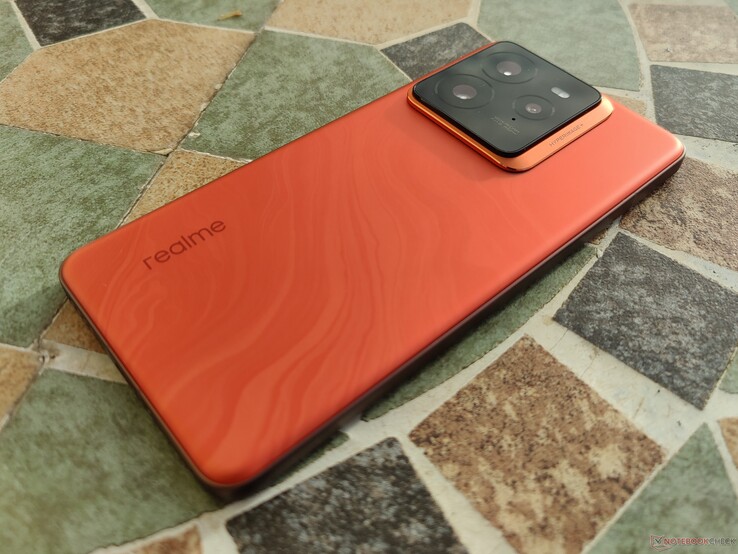



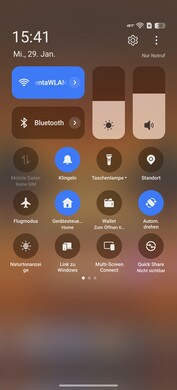

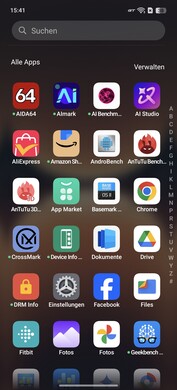
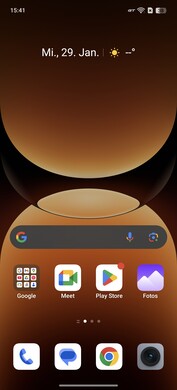
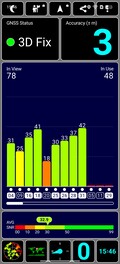
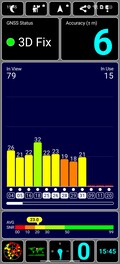

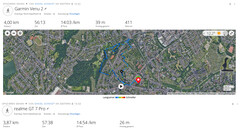


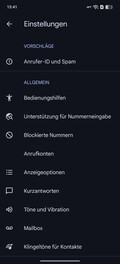








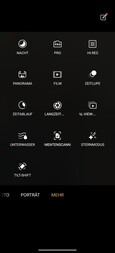

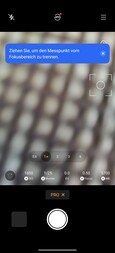
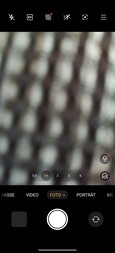
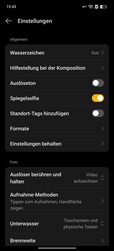
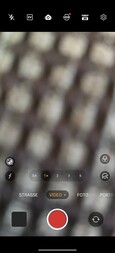

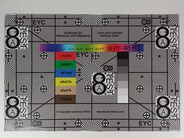




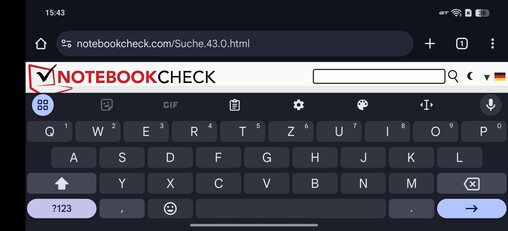

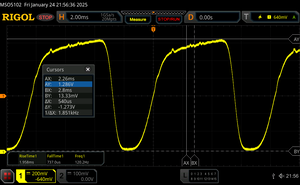





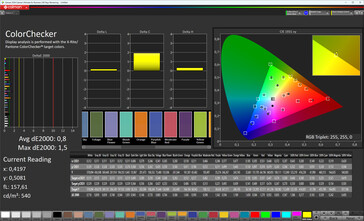
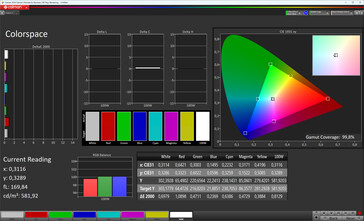
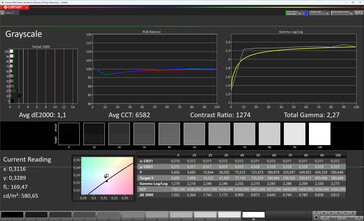
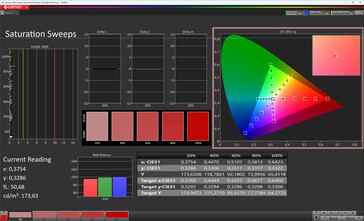
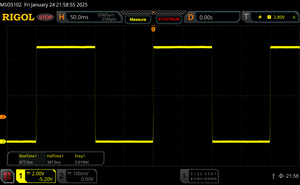
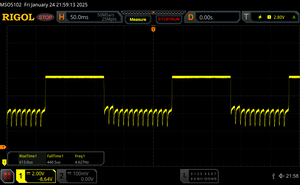

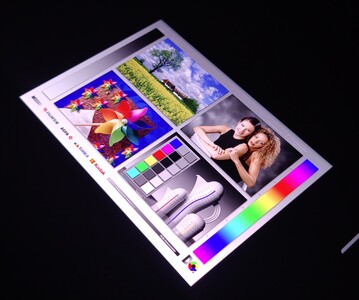
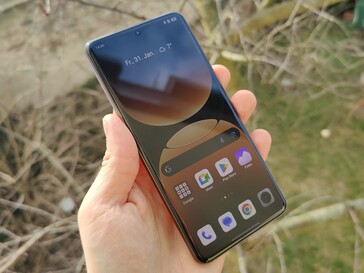
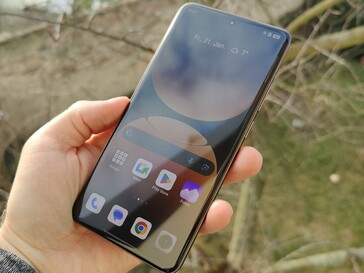
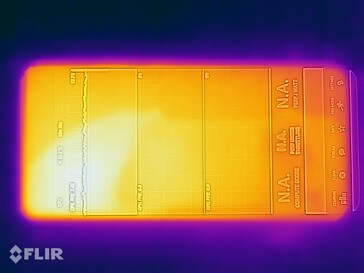
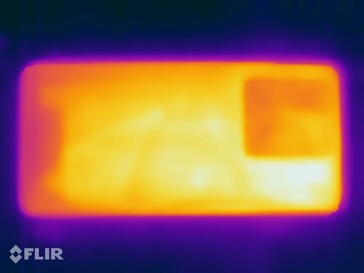
 Total Sustainability Score:
Total Sustainability Score: 








